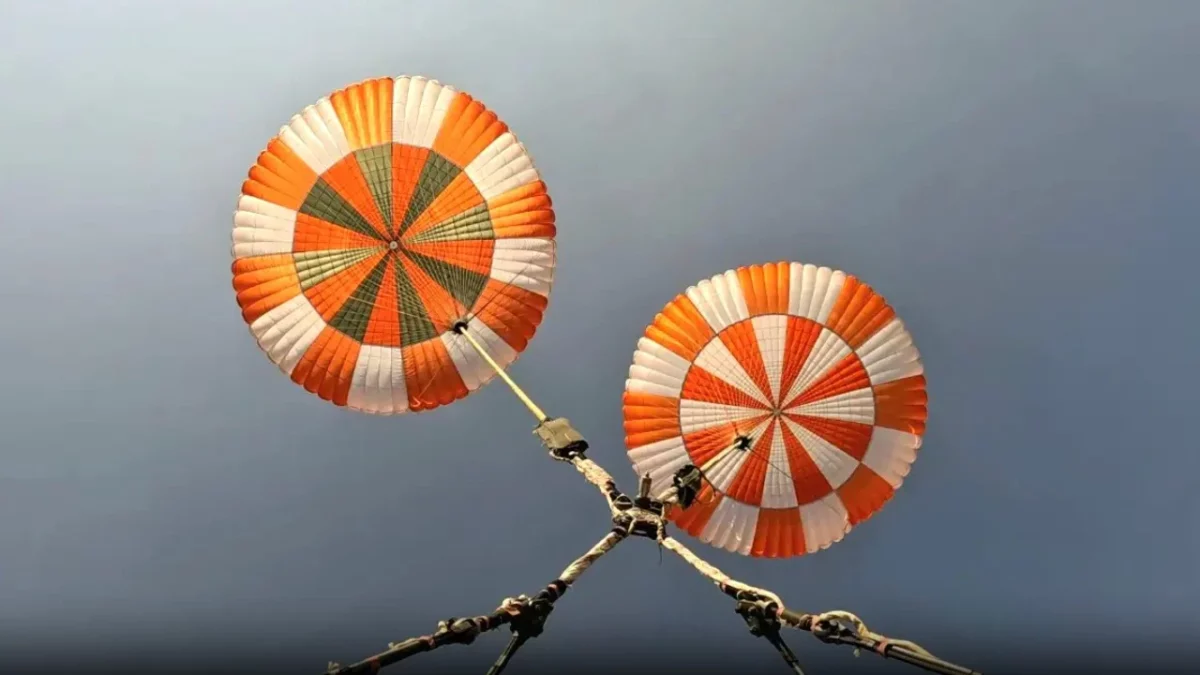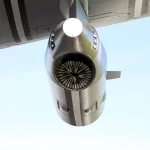In a major milestone for India’s ambitious Gaganyaan human spaceflight program, the Indian Space Research Organisation (ISRO) successfully conducted a crucial test of the Crew Module’s main parachutes at the Babina Field Firing Range in Jhansi on November 3, 2025.
Critical Step Toward Human Flight
The test was part of a series of Integrated Main Parachute Airdrop Tests (IMAT) designed to validate the performance of Gaganyaan’s complex parachute recovery system — a vital component to ensure the crew module’s safe descent and landing after re-entry.
The Gaganyaan mission aims to send a three-member Indian crew into low-Earth orbit for a three-day mission, marking India’s first human spaceflight. Before the crewed flight, ISRO continues to conduct extensive unmanned validation tests to ensure every system — from crew escape to recovery — functions flawlessly under extreme conditions.
Sophisticated Parachute System
The Gaganyaan Crew Module Parachute System comprises ten parachutes of four different types, each with a specific role in the multi-stage recovery process.
The sequence begins with two apex cover separation parachutes, which remove the protective cover from the parachute compartment. Next, two drogue parachutes deploy to stabilise and decelerate the rapidly descending module.
Once stabilised, three pilot parachutes are released to extract the three large main parachutes, which slow the module to a safe landing speed. Notably, the design includes redundancy — even if one main parachute fails, the remaining two can ensure a safe and controlled touchdown.
Advanced Design Features
Each main parachute employs a reefed inflation mechanism, where the canopy opens in stages — partially first (reefing) and then fully (disreefing). This controlled inflation reduces the sudden mechanical loads on the parachute and the module, ensuring smoother and safer deceleration.
A pyrotechnic device precisely times this process, ensuring that inflation occurs in carefully calculated stages to maintain structural integrity and stability during descent.
Testing Under Extreme Conditions
The latest IMAT simulated a delay in disreefing of one of the main parachutes, replicating one of the most challenging scenarios expected during actual flight. The goal was to verify the system’s ability to maintain balance and performance under asymmetric load conditions.
A dummy Crew Module, matching the actual mass, was dropped from an IAF IL-76 aircraft at an altitude of 2.5 kilometres. The entire sequence — from drogue release to main parachute deployment — performed flawlessly, resulting in a stable descent and soft landing.
Joint Effort of Indian Agencies
The test was a collaborative effort between ISRO’s Vikram Sarabhai Space Centre (VSSC), the Aerial Delivery Research and Development Establishment (ADRDE) of DRDO, along with the Indian Air Force and Indian Army. The coordinated teamwork ensured the success of this high-risk, high-precision mission.
Progress Toward Crewed Launch
This successful test marks a significant advancement in India’s journey toward human-rating the Gaganyaan systems. It validates the parachute system’s structural resilience and reliability even under failure-like conditions, bringing the nation one step closer to launching Indian astronauts into space.
With this achievement, ISRO has demonstrated its growing technical maturity and confidence in critical safety systems — a cornerstone for the success of India’s first crewed space mission.













